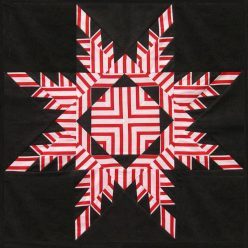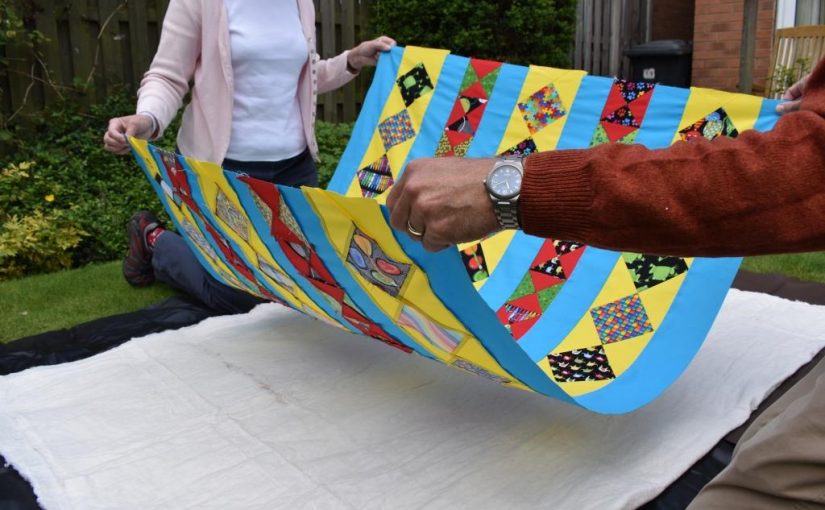A quilt is made up of three layers – the top (which may be wholecloth, pieced or appliqued), the wadding and the backing. These three layers are held together by the decorative quilting stitches.
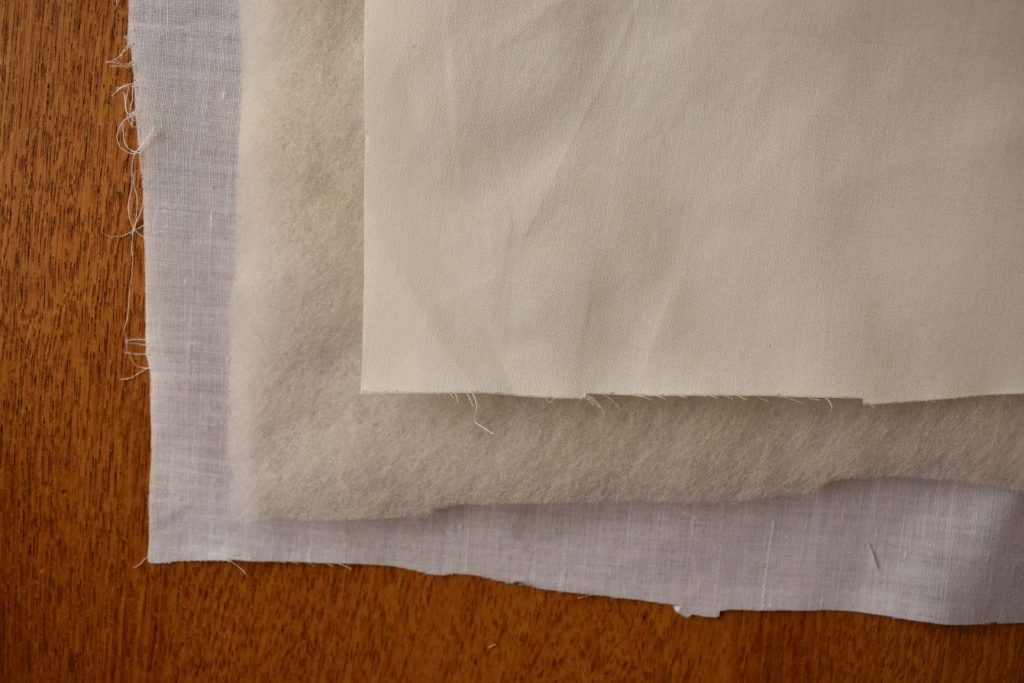
It’s important that the layers don’t shift around during the quilting process, as this will result in puckers on either the top or bottom fabric, which will be impossible to remove without a lot of tedious unpicking.
So (unless you are working on a full size quilt frame), you need to secure the layers together temporarily by one of these methods:
- tacking
- spray basting
- iron-on wadding
- safety pinning
- long-arm quilter
Whichever method you use, it is important to cut your wadding and backing out at least 2″ bigger all round than your quilt top. Include more if you can. The layers can creep a little during the layering process, no matter how careful you are, and you don’t want to be left at the edge with a small area with no wadding and/or backing underneath.
Preparation
Before securing the layers properly, it’s usually best to use ordinary pins to quickly layer them temporarily (unless you are going to spray baste). You can then check that there are no pleats or tucks before continuing.
Iron your top and backing fabric. If it is a large quilt, place the ironing board next to a table, so that the ironed part is supported, rather than dragging on the floor.
If your wadding has heavy fold marks, spread it out overnight (maybe on the sofa or a spare bed) to allow these to drop out.
Carefully spread out the three layers one at a time on the carpet (if you are able to work on the floor comfortably) or on a large table which will not be damaged by scratches. If you don’t have anywhere suitable at home, consider finding a church hall or similar, where they usually have plenty of tables that you could put together. Maybe your quilt group could have a joint session, and help each other?
Make sure that each layer is smooth, but not stretched.
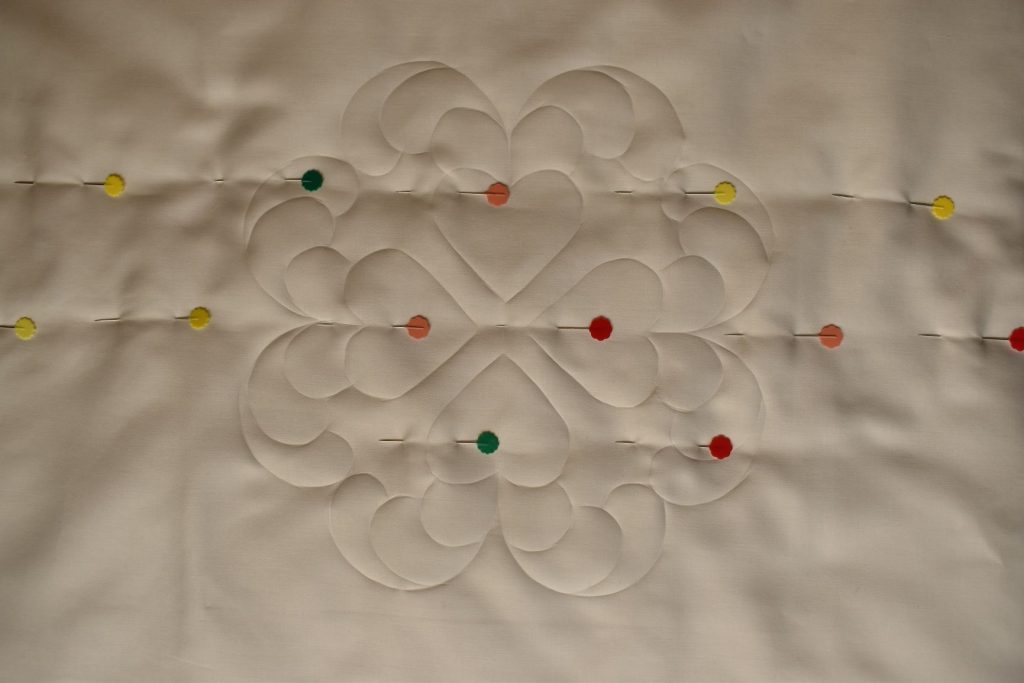
Tips for successful pinning:
- Try to avoid lifting up the fabric more than the barest minimum while you insert the pin – its important to keep all the layers aligned properly. Put the pin in at a flat angle, and just lift very slightly until it emerges again.
- Check that you feel the solid surface underneath with your pin before coming back up again, so that you are sure you have picked up all three layers.
- If you are working on the floor, make sure that you haven’t actually caught the carpet fibres with your pin too!
- Start in the middle, and then work out towards the edge, then go round the other side and work out from the centre again. This avoids getting scratched by the pins you have done already.
- Pin across the centre first, and then add parallel lines of pins about 2″ apart.
- Turn over the quilt, and check that you haven’t got any puckers or ripples before continuing.
Tacking
Tacking is an excellent method for holding the layers together, but admittedly, it is time-consuming and boring! However, I still prefer it to other methods for hand quilting, particularly if it is for a special project.
Which sort of thread is suitable for tacking? Thread sold as “tacking thread” is made of soft cotton fibres and is a bit “fluffy” so that it grips the fabric layers well. It is deliberately quite weak, so can be broken easily when you want to remove it, if it has accidentally got caught in the proper quilting stitches.
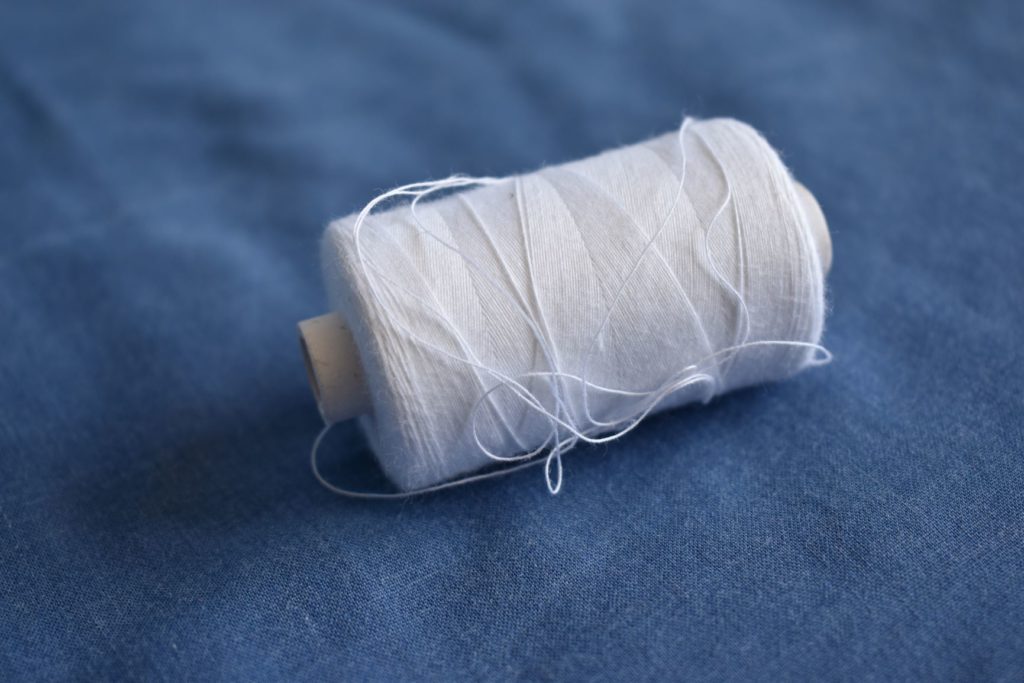
You may have old reels of thread leftover from long-ago projects, and could use them up here – I am currently using up a reel of beige YLI Soft Touch, as this is soft and easily breakable. Beware of strong dark colours which can sometimes leave coloured holes behind when you remove it. Don’t use your expensive quilting thread for tacking – it is too slippy.
Tack from one side to the other, starting across the centre. If you remember, make the tacking stitches longer on the back than the front, so that there is less chance of them getting in the way of your quilting. Some people like to tack in zigzags to hold a larger area together.
Pull it so that it is gently tight – holding the layers firmly together, but definitely not gathering it at all.
Tack further lines, 2 – 3″ apart, gradually working outwards.
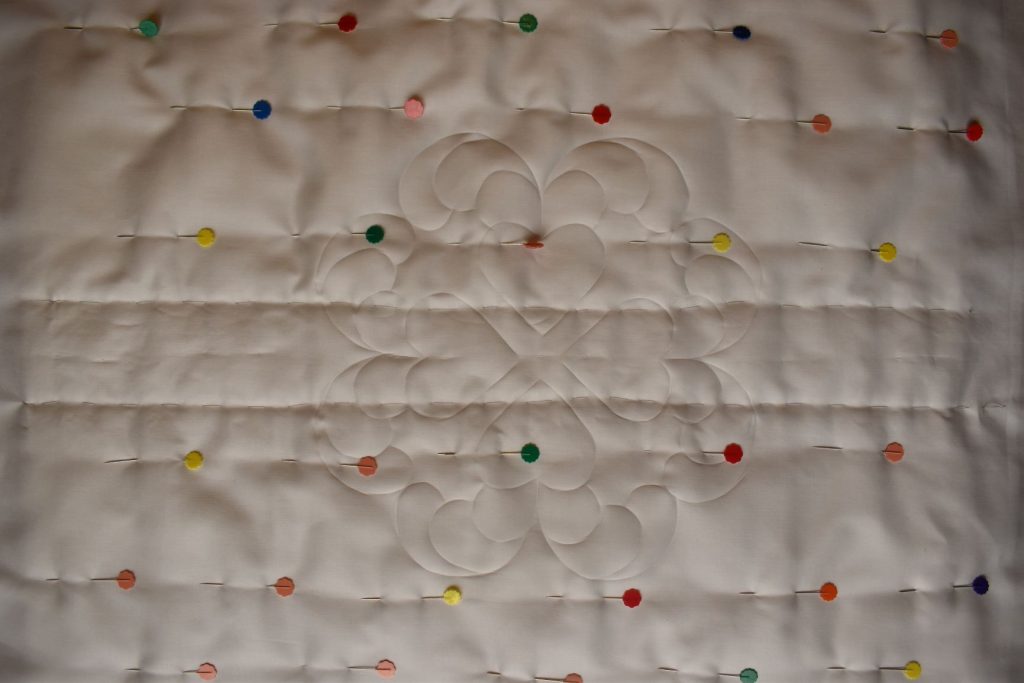
Don’t tack over important places such as points.
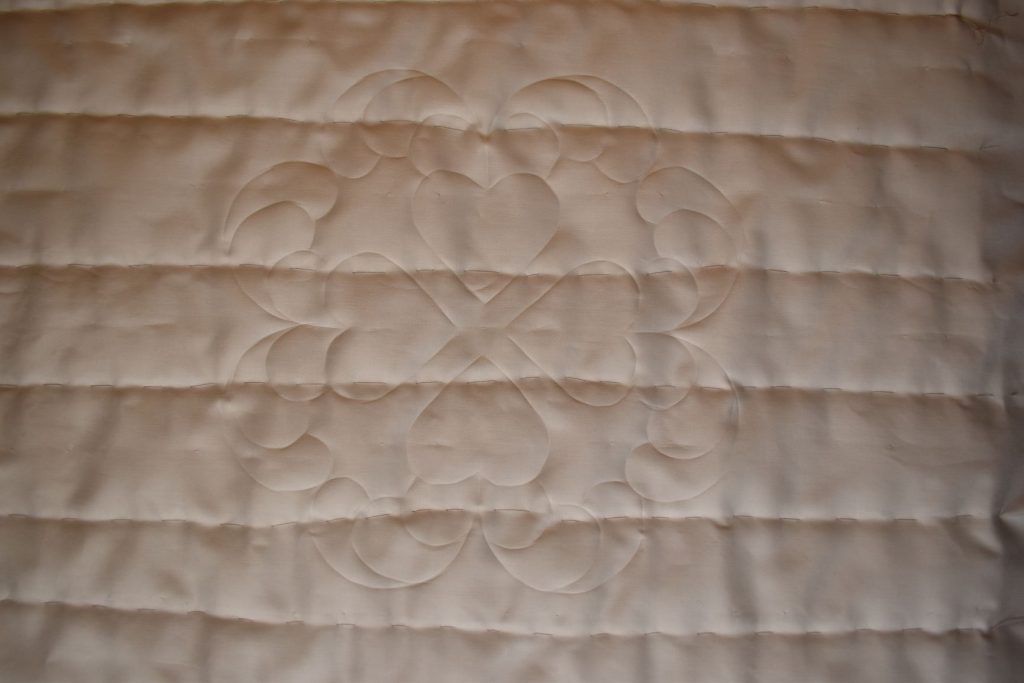
Some people like to tack diagonally like this, as it holds the layers together well.
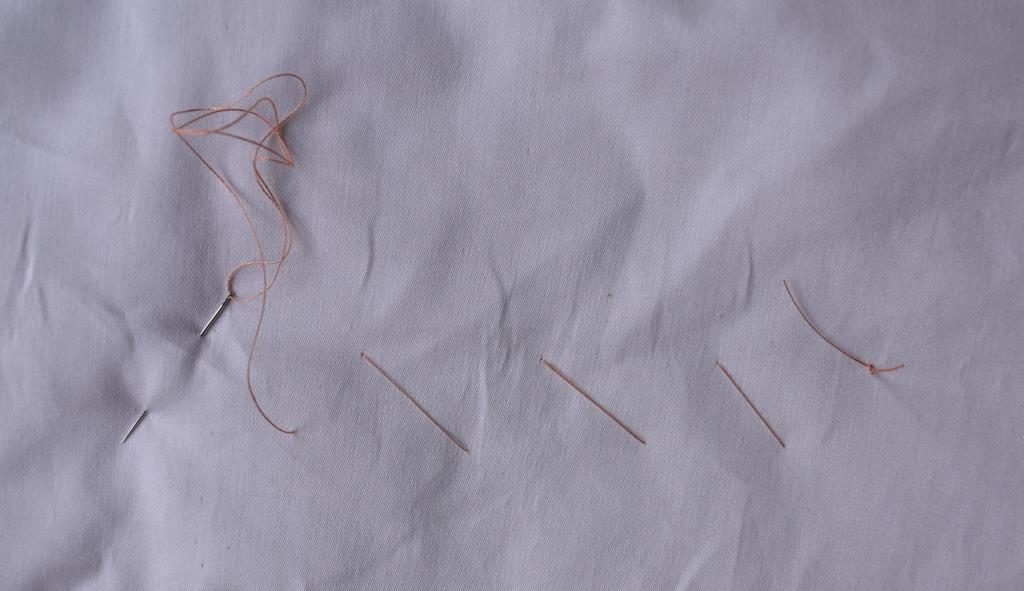
Secure your tacking thread at both ends in a way which will be easy to remove after quilting.
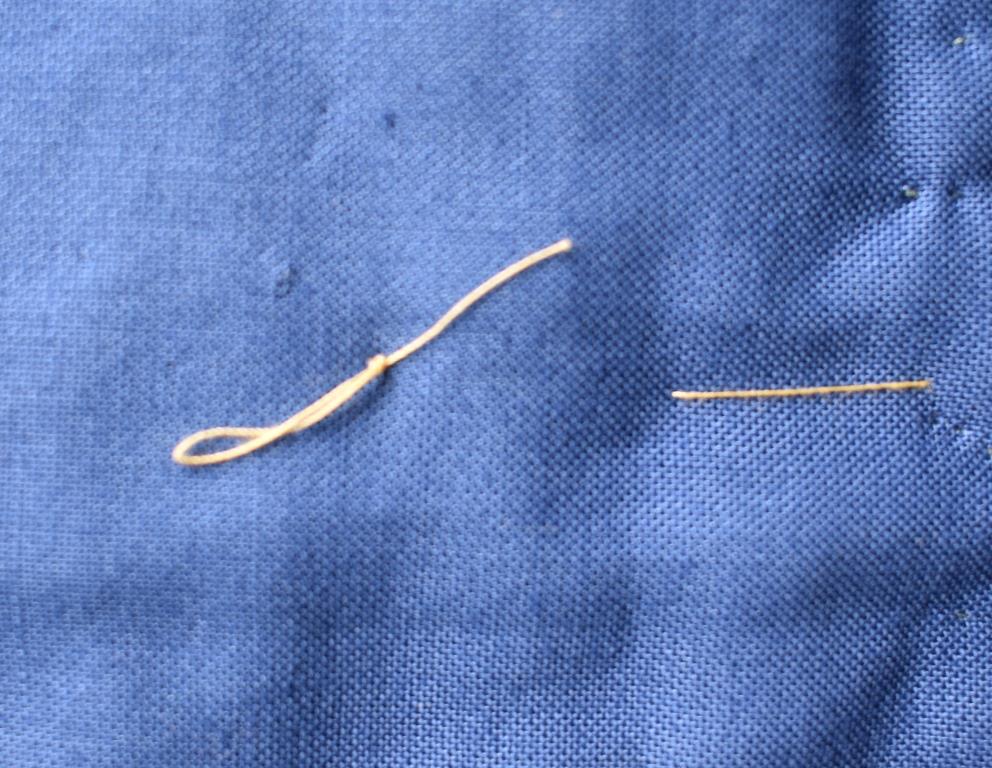
I use a large overhand knot (the one that makes a large loop) at the beginning.
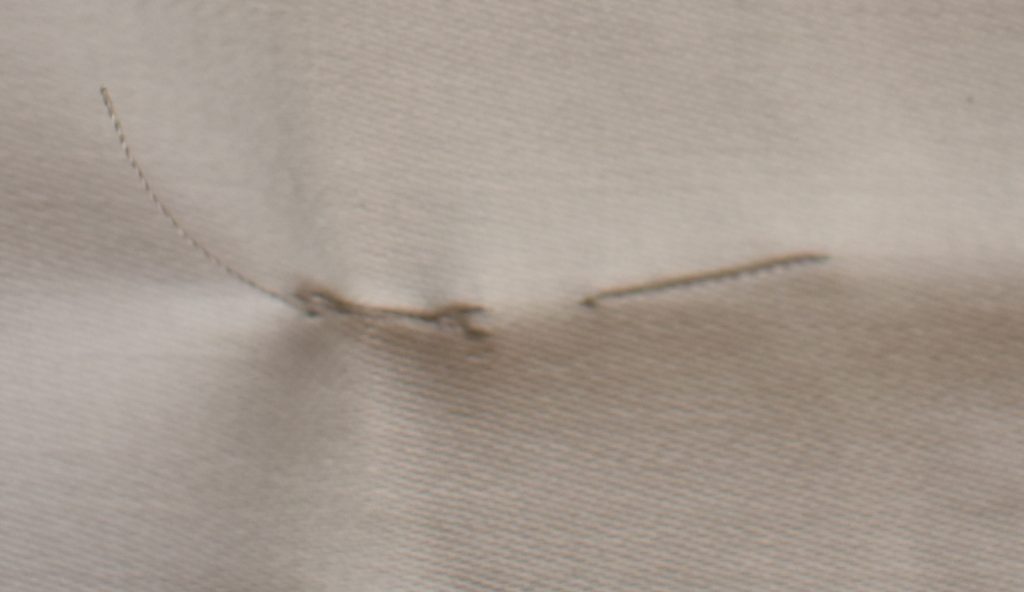
At the end, I make several large stitches over the same place.
Spray basting
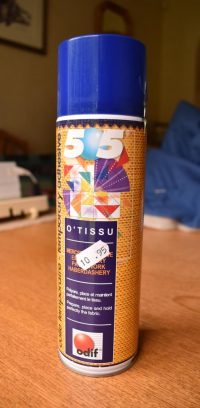
505 spray is a temporary adhesive which works very well for layering up quilts (other makes are available, but make sure that they are a temporary basting glue, not a permanent one).
I prefer to use it outside if possible, but it can be used in a well-ventilated room inside.
Protect your table from the glue spray with plastic sheet, or use your lawn on a dry day.
Shake the can well, and lightly spray one side of the wadding (you shouldn’t get blobs of glue, but if you do, the wadding can more easily absorb any extra without showing, than if you spray directly onto the fabric).
Don’t point the nozzle straight down at the wadding – hold it at an angle when spraying, so that the glue spreads out over a wider area. Zigzag your hand from side to side across the quilt, so that there is a light, even covering. (I have edited the photograph with the yellow to give you an idea where to spray – it’s colourless really!). Spray in one direction, and then spray again lightly from the side.
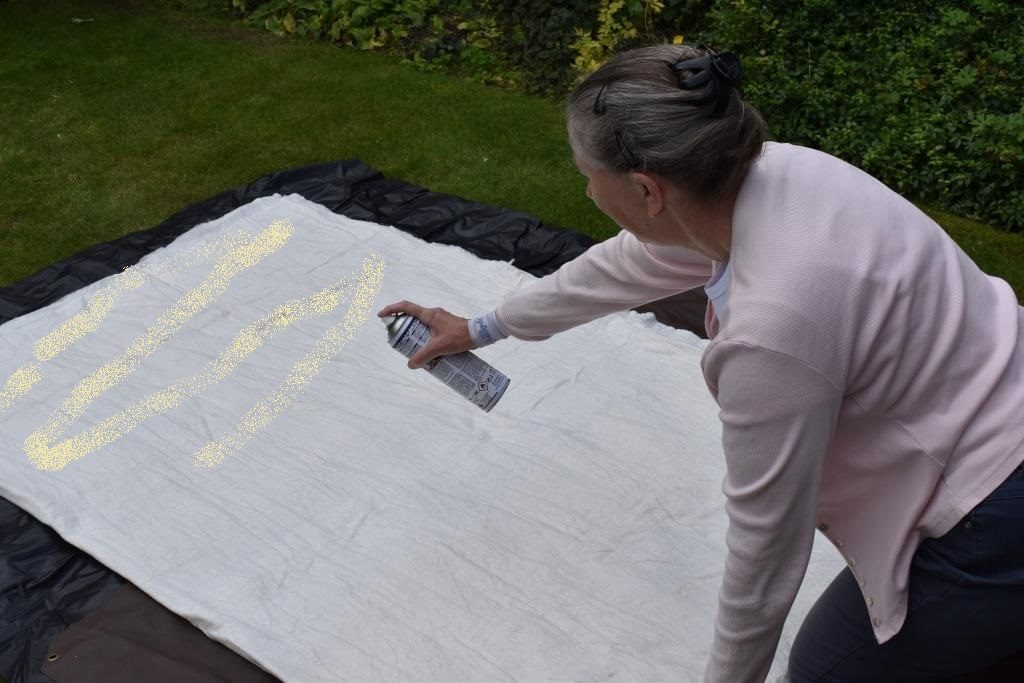
Hold the quilt top right side up , and gently lay it down onto the wadding.
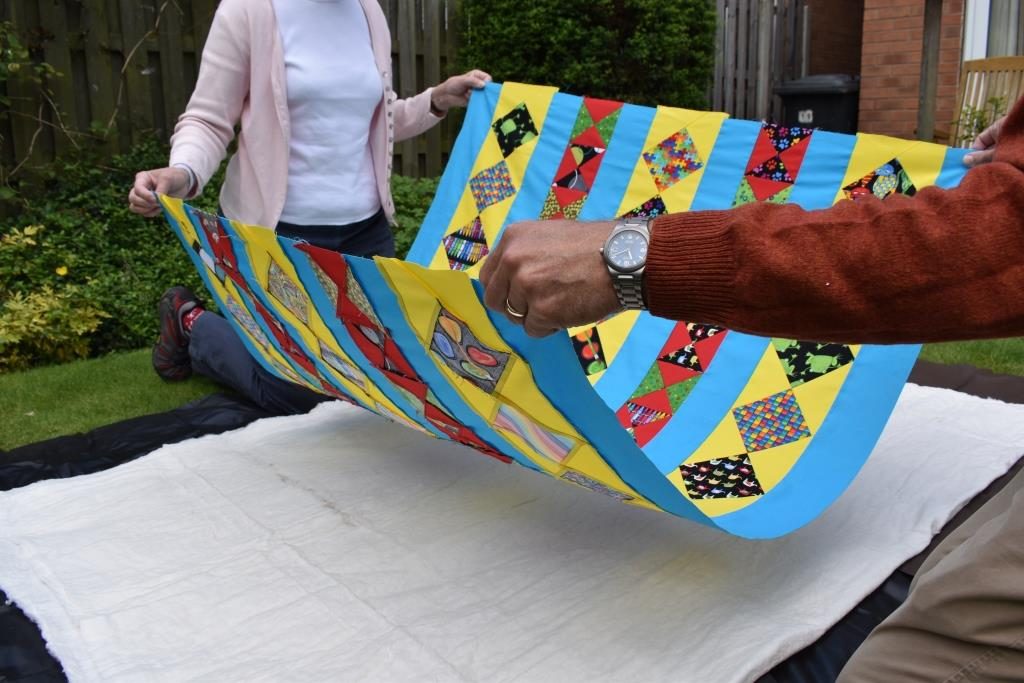
If you can borrow some friends or family to help you with this, its much easier to get it on flat, particularly for a larger quilt. Hold a corner or two each, and let the centre droop so that the quilt top is hanging in a U shape over the sprayed wadding. Lower down the centre first, and then let the sides down gradually.
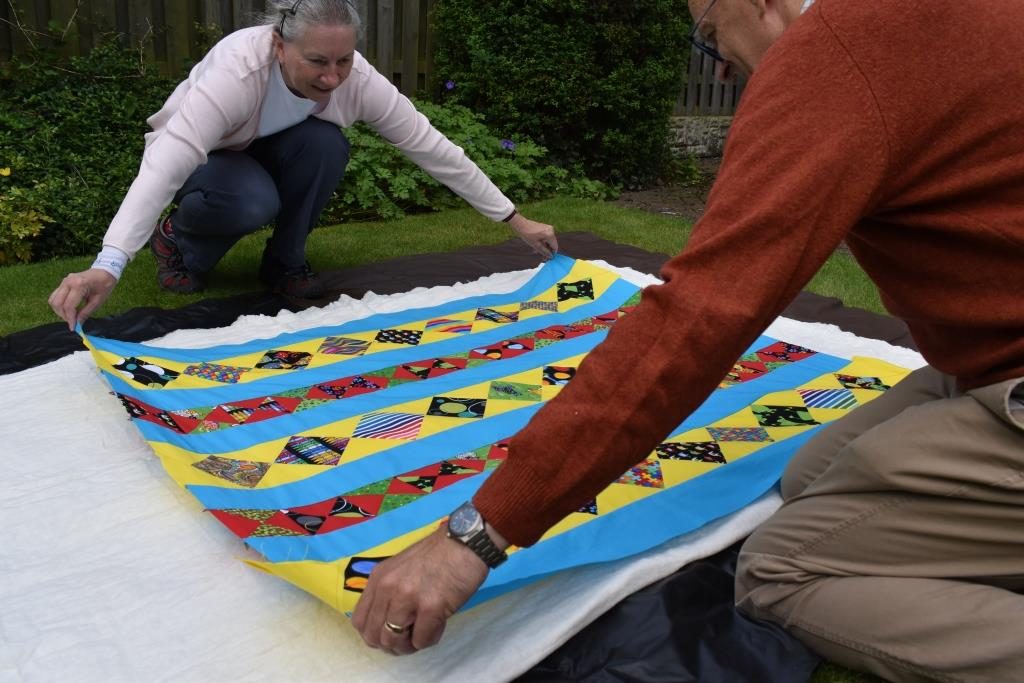
Pat it down, working outwards from the centre – don’t push the fabric, or you will end up with ripples. If it isn’t flat, or if it’s not positioned in the middle of your wadding, just lift it off and lower it down again more carefully.
If you haven’t got a willing assistant, you can roll your quilt top on pool noodles or a clean section of drainpipe, and gradually unroll over the sprayed wadding.
Turn everything over, spray again, and then lay over the backing fabric using the same technique.
Iron-on wadding
Iron-on wadding (see details on the Wadding page) is a quick and easy way of layering your fabric. Just spread out your top, wadding and backing sandwich as usual, and press according to the manufacturer’s instructions to activate the fusing medium.
If your carpet is synthetic, or you have concerns about scorching it, you may wish to spread out an old blanket first (the orange layer on my photo) to protect it from the heat of the iron.
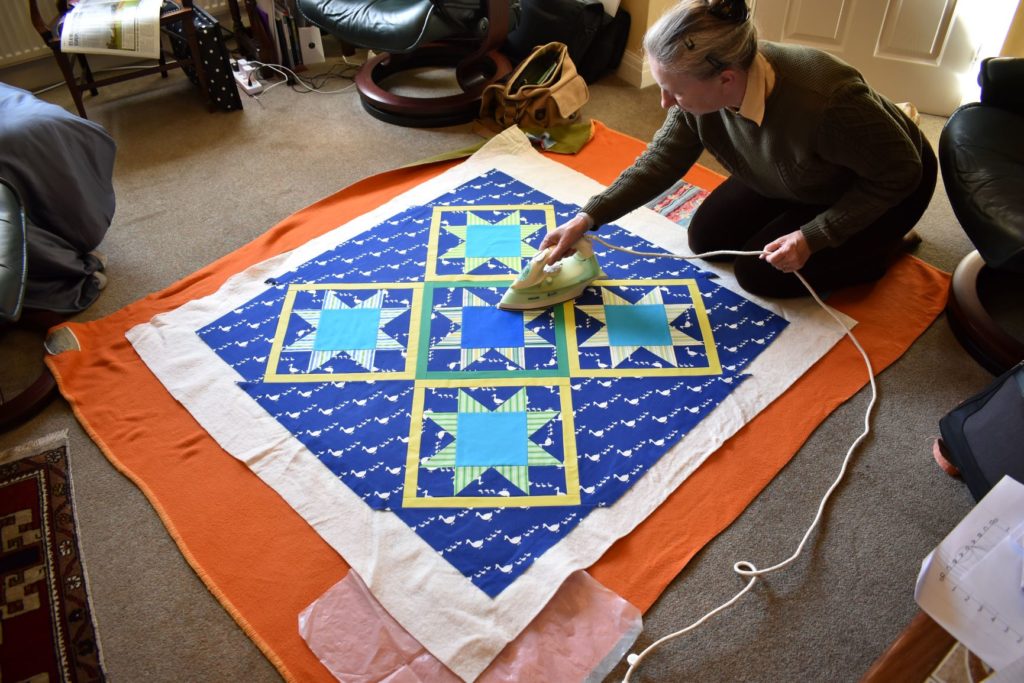
Again, don’t push too firmly sideways with the iron, or you will end up with ripples. If it doesn’t lie flat, its easy enough just to pull the top away from the wadding, and reposition it.
Make sure that your fabric top and backing covers all the fusible wadding – its easy to go over the edge otherwise, and mess up your iron. If either the top or backing layer exposes the iron-on wadding, wrap a teflon pressing sheet or baking parchment around the exposed area, to protect your iron and allow you to secure the layers right to the edge.
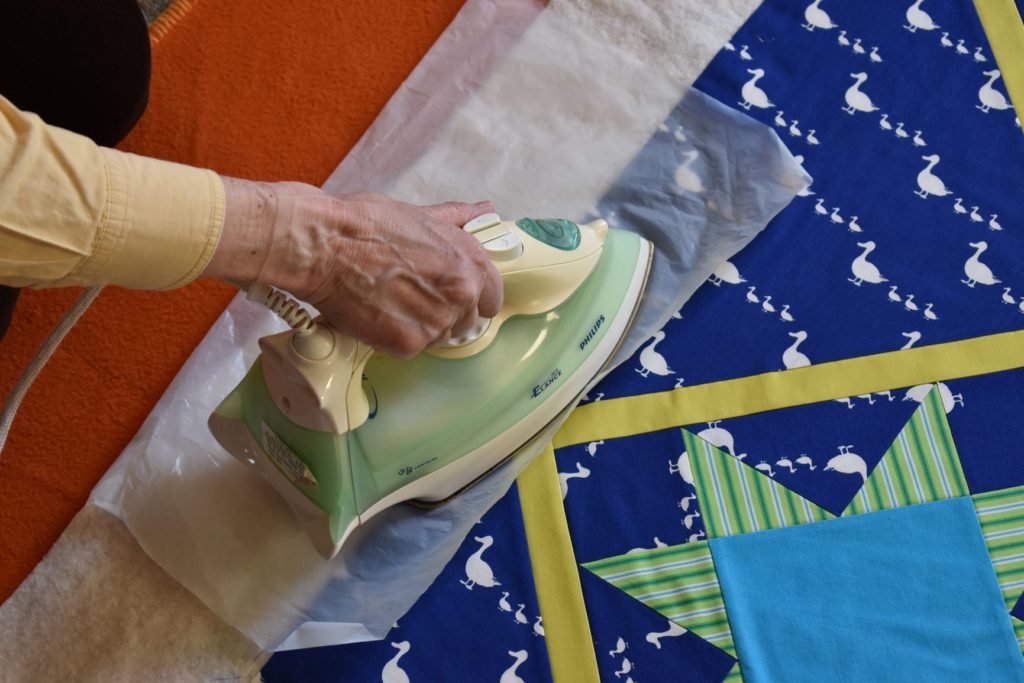
You may find that it is a good idea to tack around the edge afterwards, just to stop it lifting during quilting.
Only a few types of fusible wadding are available, and they all have quite a low loft, giving a flat finish.
Safety Pins
I have included these as a layering method for completeness, but actually I would only recommend them for machine quilting. It is difficult to position your hoop so that none are trapped in between the rings, and they can catch on your thread too easily when hand quilting, and are a nuisance.
You need curved safety pins, not straight ones. This is so the fabric lies flat after pinning.
Large or small curved safety pins are available
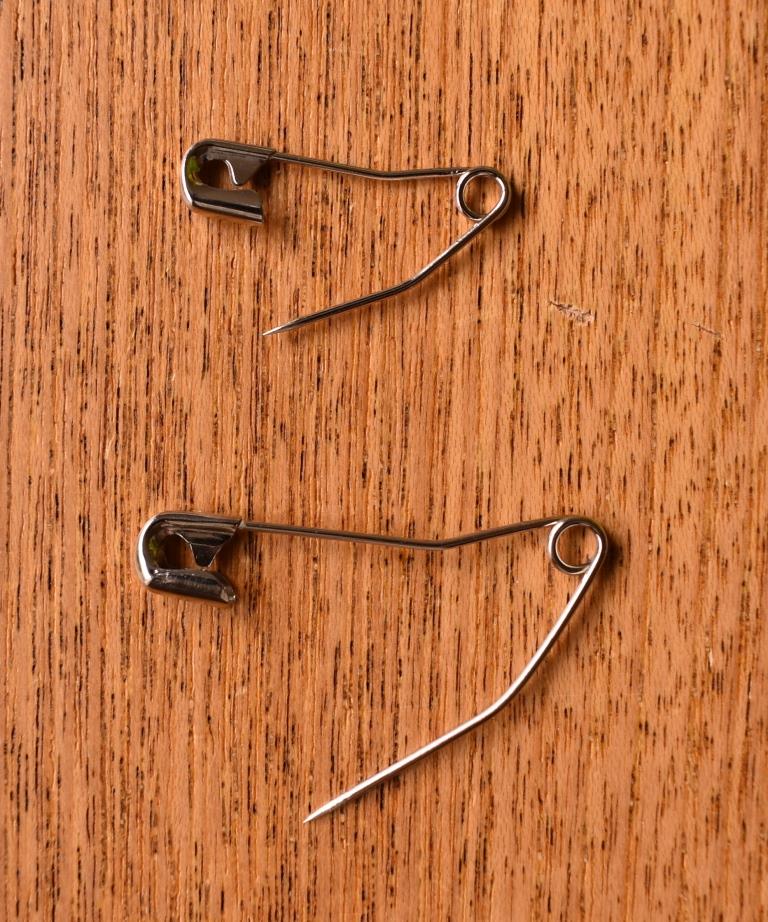
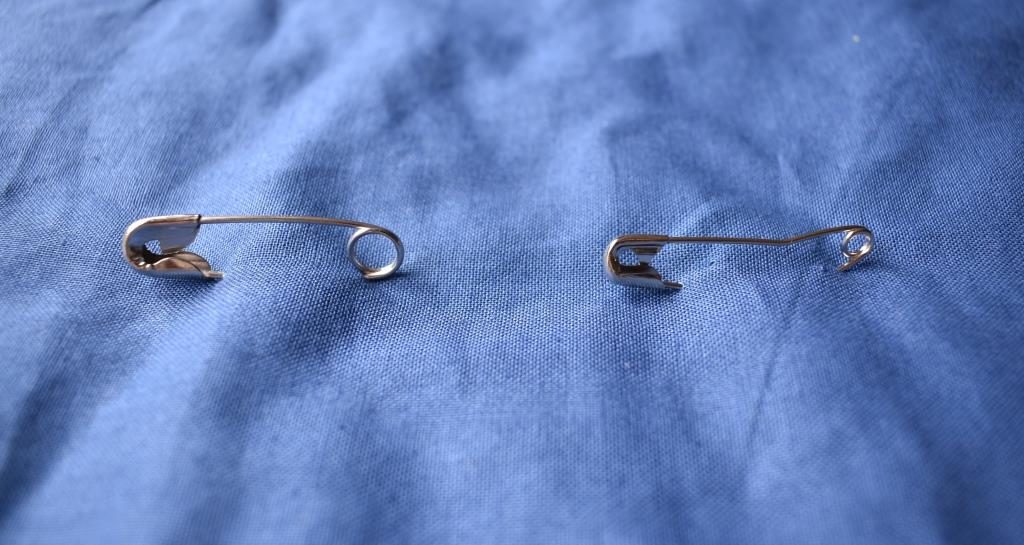
To safety pin even a moderately sized quilt requires a much larger number than might you think. To place them 2″ apart, you will need about 100 pins for a quilt 40″ square. Don’t skimp on quality though – and throw away any blunt ones that you discover, as they can damage your fabric.
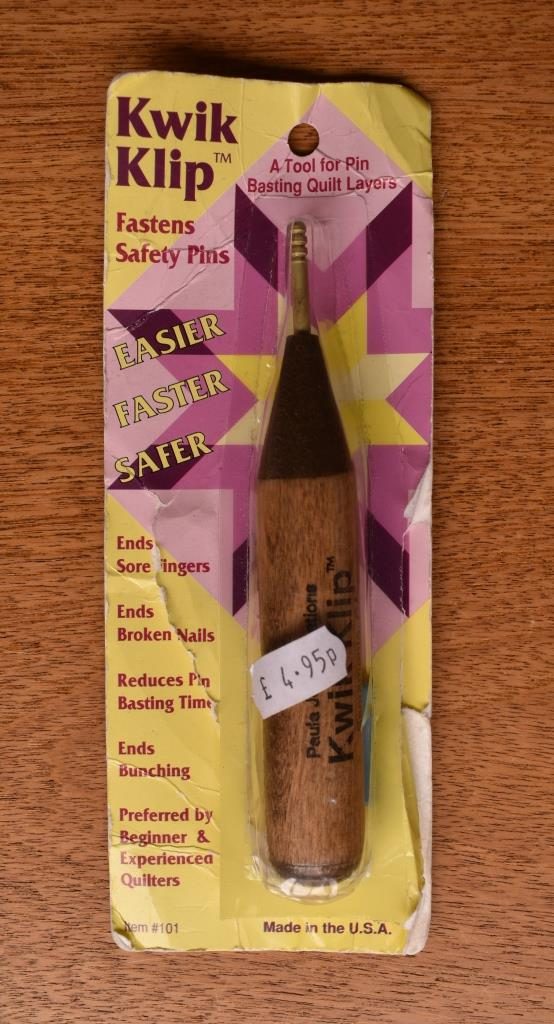
It can be quite hard work on your hands to do up so many pins.
You can buy a device called a Kwik Klip which reduces sore fingers once you get used to using it.
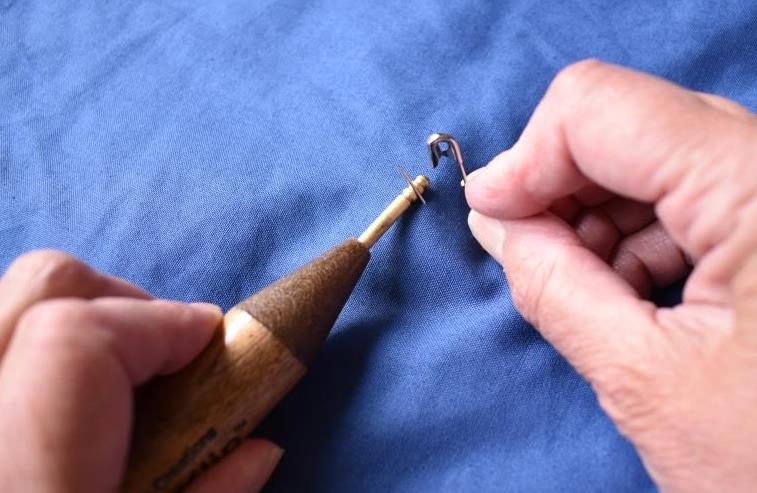
Save yourself half the work by storing them open , not closed – this may feel odd, but it’s quite safe as long as you take a little more care picking them individually out of the box.
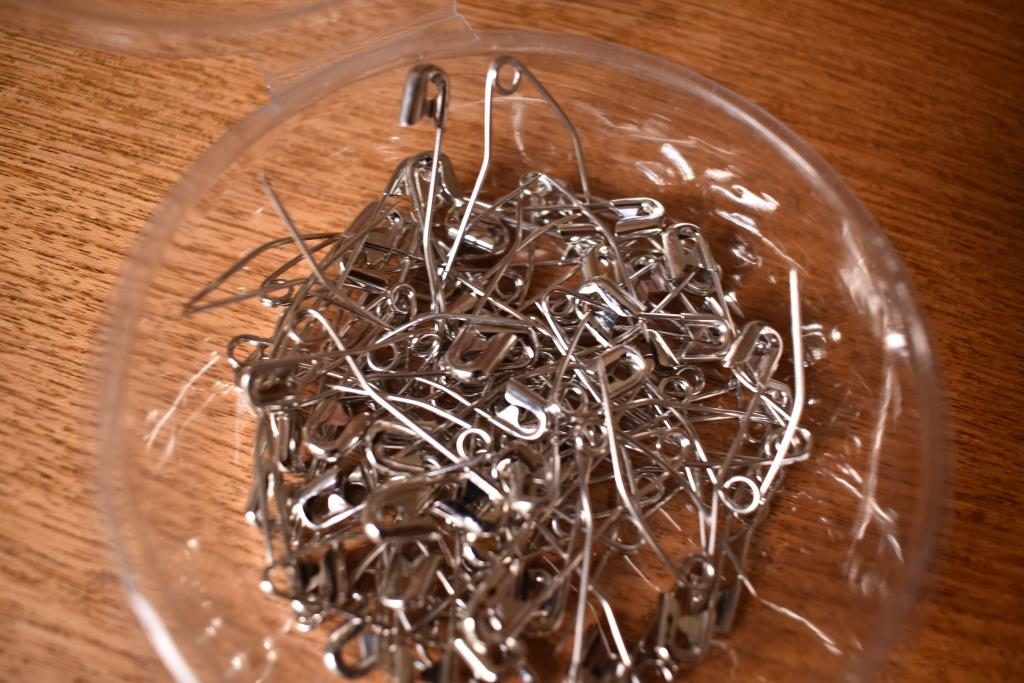
Plastic tacks
Short comment – nasty things; don’t use them. They may go in all right, but if they are tight enough to hold your layers firmly, they will be really difficult to remove – and you run a serious risk of cutting your quilt in the attempt.
Layering your quilt carefully is not very interesting in itself, but if done properly, you will be able to move onto hand quilting without worries about puckers and pleats. It is worth doing well.
Long arm quilter
One option now available is to pay someone to tack your quilt together using a long-arm quilting machine. Although you will still have to pay for their time to set up the machine properly, it obviously doesn’t cost as much as stitching an elaborate design.
Ask them to stitch all over the quilt, about 2″apart, using a long stitch length, so that you can take the tacking out after you have completed the hand quilting.
Quilting Basics
This page is part of a set about Quilting Basics.
If you would like to try out hand quilting on a small project, the Feathered Hearts download pattern from my online Shop would be suitable.
Click on the links to discover more:
